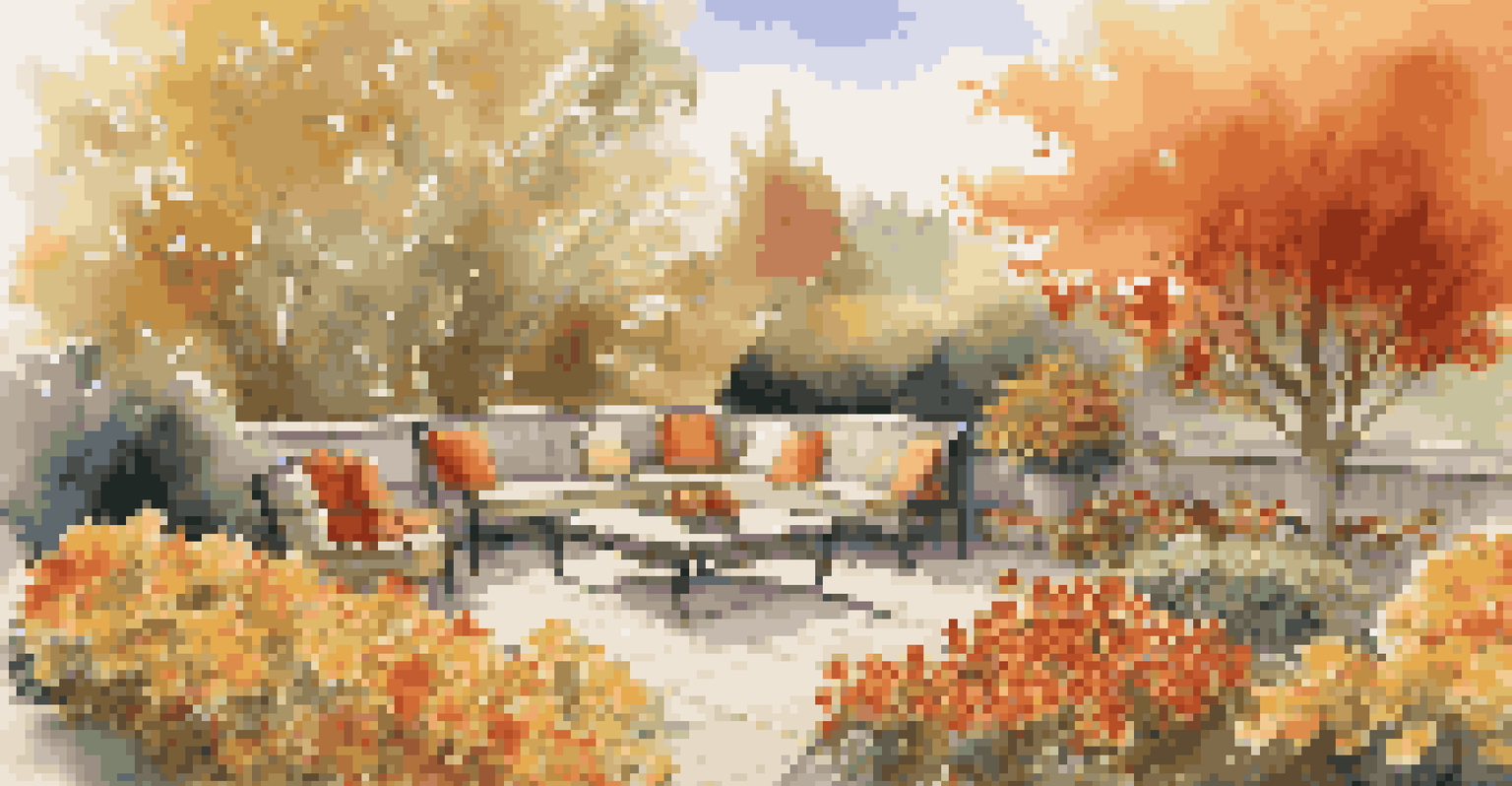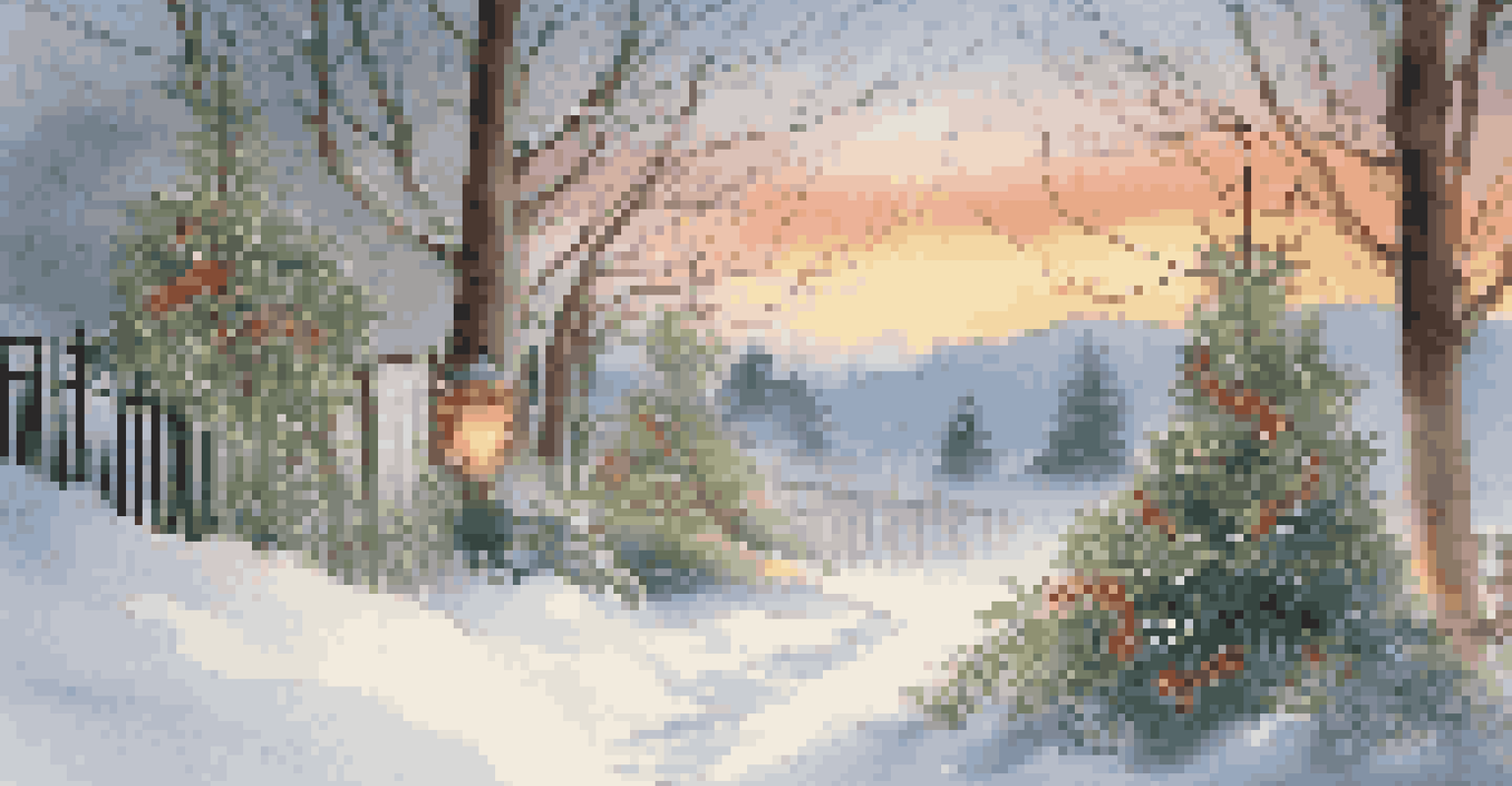Using Seasonal Plants to Create a Dynamic Landscape Design

Understanding the Benefits of Seasonal Plants
Seasonal plants offer a vibrant and ever-changing landscape, transforming your garden with each passing season. By incorporating plants that bloom or showcase foliage at different times, you can create a dynamic visual experience. This not only keeps your garden looking fresh but also attracts various pollinators, enhancing the ecological balance.
Gardening is a way of showing that you believe in tomorrow.
Moreover, seasonal plants can help you take advantage of local climate conditions, ensuring that your landscape thrives throughout the year. For instance, spring flowers like tulips can bring early color, while fall favorites like asters can extend the blooming season. By selecting plants suited to your region, you’ll foster a resilient garden that requires less maintenance.
Additionally, using seasonal plants allows for creative expression in your landscaping. You can experiment with different color palettes and textures, creating a unique aesthetic that reflects your personal style. This diversity adds depth to your outdoor space, making it more inviting for family and friends.
Planning Your Seasonal Landscape Design
The key to a successful seasonal landscape design is thorough planning. Start by mapping out your space and noting the sunlight and shade patterns throughout the day. This will help you choose the right plants for each area, ensuring they receive optimal light and thrive in their designated spots.

Next, consider the blooming times of the plants you wish to incorporate. Create a timeline that outlines when each plant will flower, allowing for a seamless transition of colors and textures throughout the seasons. This way, your garden will have a continuous display of beauty, rather than bursts of color that quickly fade.
Seasonal Plants Enhance Your Garden
Incorporating seasonal plants creates a vibrant and dynamic landscape that attracts pollinators and thrives throughout the year.
Don’t forget to take into account the height and spread of your chosen plants. Layering plants of varying heights can create a stunning visual effect, while also providing the necessary space for each to grow. This thoughtful arrangement will enhance the overall design and prevent overcrowding.
Choosing the Right Seasonal Plants
When selecting seasonal plants, consider native species that thrive in your local climate. Native plants are often more resilient and require less water and maintenance, which can save you time and resources. They also support local wildlife, making your garden a haven for birds, butterflies, and beneficial insects.
To plant a garden is to believe in tomorrow.
Incorporate a mix of annuals and perennials for a diverse landscape. Annuals like marigolds and petunias provide vibrant pops of color, while perennials like daylilies and coneflowers return year after year, offering long-term beauty. This combination ensures that your garden remains dynamic and engaging throughout the seasons.
Don’t forget about foliage! Plants with interesting leaves can add texture and color even when flowers aren’t in bloom. Consider incorporating ferns, hostas, or ornamental grasses to create visual interest and a lush backdrop for your seasonal blooms.
Creating Seasonal Themes in Your Landscape
One fun approach to designing your landscape is by creating seasonal themes. For instance, in spring, you could focus on pastel colors with tulips and hyacinths, while summer might bring bold hues with zinnias and sunflowers. This thematic approach can make your outdoor space feel cohesive and thoughtfully curated.
Autumn can be a celebration of warm tones with chrysanthemums and ornamental peppers, while winter can feature evergreens and colorful berries. Using these themes not only enhances the beauty of your landscape but also makes it more engaging for visitors who come to see the seasonal changes.
Plan for Seasonal Transitions
Thorough planning, including mapping sunlight patterns and plant heights, ensures a seamless transition of colors and textures in your garden.
Incorporating seasonal decorations, like pumpkins in the fall or festive lights in winter, can also elevate the theme. These small touches can create a warm, welcoming atmosphere, inviting others to enjoy your thoughtfully designed space.
Maintaining Your Seasonal Landscape
Maintenance is an essential aspect of keeping your seasonal landscape looking its best. Regular tasks such as watering, pruning, and deadheading will promote healthy growth and encourage blooming. Establishing a routine can help you stay on top of these tasks, ensuring your garden flourishes throughout the seasons.
Seasonal changes may also require different maintenance approaches. For example, preparing your garden for winter may involve mulching and protecting tender plants from frost. Being proactive in your maintenance will not only enhance the beauty of your landscape but also prolong the life of your plants.
Consider documenting your maintenance routine and the plants’ progress through the seasons. This can provide insight into what works best in your landscape, helping you refine your design and care strategies for future seasons. Plus, it’s a great way to appreciate the transformation of your garden over time!
Incorporating Hardscapes with Seasonal Plants
While plants are the stars of your seasonal landscape, don’t forget to incorporate hardscapes! Elements like pathways, patios, and garden beds can enhance the overall design while providing structure to your outdoor space. Using natural materials like stone or wood can create a seamless blend with the seasonal plants around them.
Strategically placed hardscapes can also help define areas in your landscape, guiding visitors through your garden. For instance, a winding stone path can lead to a cozy seating area surrounded by vibrant flowers, creating a perfect spot for relaxation. These features not only add functionality but also contribute to the aesthetic appeal of your landscape.
Combine Plants and Hardscapes
Integrating hardscapes like pathways and trellises with seasonal plants enhances the overall design and functionality of your outdoor space.
Additionally, consider how hardscapes can complement seasonal plants. A trellis adorned with climbing vines or a decorative fence can serve as a backdrop to seasonal blooms, enhancing their beauty. By thoughtfully integrating hardscapes, you can elevate your landscape design and create a harmonious outdoor environment.
Enjoying Your Seasonal Landscape Year-Round
Ultimately, the goal of using seasonal plants is to create an inviting space that you can enjoy throughout the year. Take time to appreciate the changes in your landscape as each season unfolds, whether it’s the first bloom of spring or the vibrant hues of autumn. Your garden is a living canvas, constantly evolving and offering new experiences.
Involve friends and family in enjoying your landscape, whether through gatherings, garden tours, or simply quiet moments spent outdoors. Sharing your love for your seasonal garden can foster connections and create lasting memories. Plus, it can inspire others to explore their own gardening journeys.

Lastly, allow your landscape to inspire you creatively. Consider keeping a journal or blog about your gardening adventures, documenting the changes and your favorite plants. This not only provides a record of your journey but can also serve as a source of inspiration for others looking to create their own dynamic landscapes.